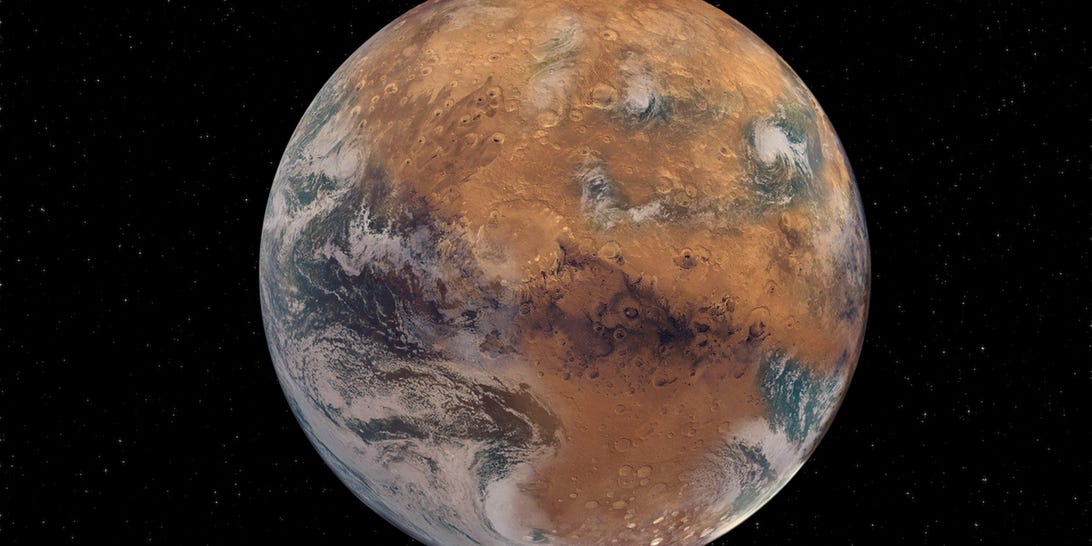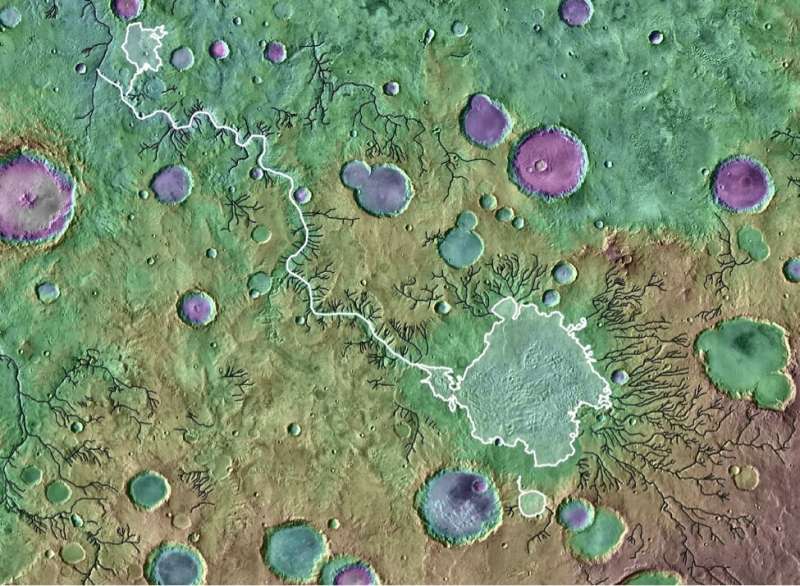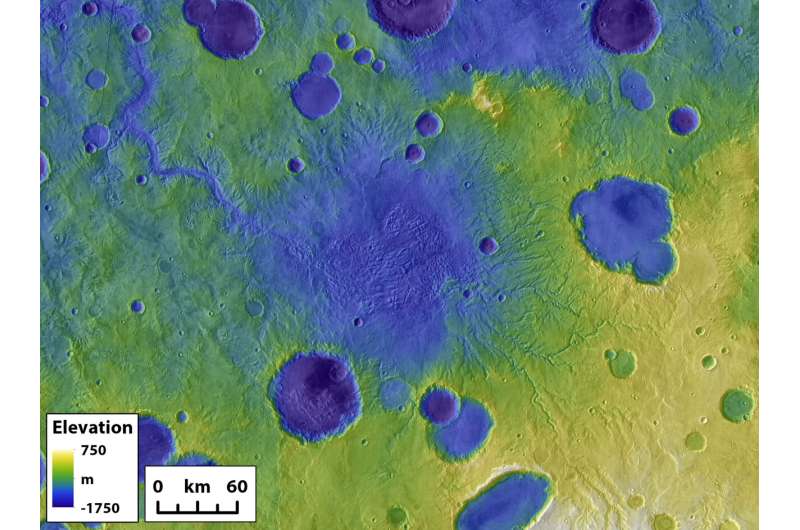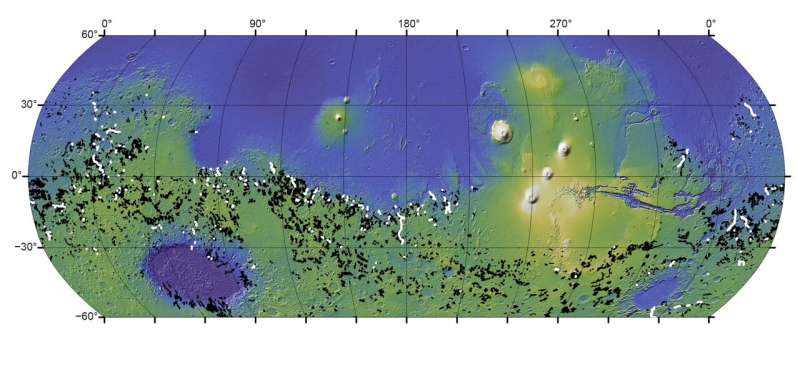
https://news.google.com/__i/rss/rd/articles/CBMiNWh0dHBzOi8vd3d3Lm5hbm93ZXJrLmNvbS9uZXdzMi9ncmVlbi9uZXdzaWQ9NTg4NjIucGhw0gEA?oc=5
2021-09-30 20:16:18Z
CBMiNWh0dHBzOi8vd3d3Lm5hbm93ZXJrLmNvbS9uZXdzMi9ncmVlbi9uZXdzaWQ9NTg4NjIucGhw0gEA

WASHINGTON — The Federal Aviation Administration (FAA) said on Thursday it would extend the public comment period for the draft environmental review of the proposed SpaceX Starship/Super Heavy program in Boca Chica, Texas, to Nov. 1.
The extension comes after federal and state agencies participating in the review made the request to extend the period for public input in the environmental assessment. SpaceX, the space company led by Elon Musk cannot launch the Starship/Super Heavy vehicle until the FAA completes its licensing process, which includes the environmental review.
The FAA released a 151-page draft environmental https://www.faa.gov/space/stakeholder_engagement/spacex_starship/media/Draft_PEA_for_SpaceX_Starship_Super_Heavy_at_Boca_Chica.pdfreview in September. The review looks at potential environmental impacts of SpaceX’s initial mission profile and reviews debris recovery, local road closures in Boca Chica and other issues.
If the FAA determines environmental impacts of the proposed project would be significant “and those impacts could not be properly mitigated to less-than-significant levels, the agency would conduct a more intensive” review. SpaceX did not immediately respond to a request for comment.
Reuters reported in July https://www.reuters.com/business/aerospace-defense/faa-warns-spacex-it-has-not-approved-new-texas-launch-site-tower-2021-07-14 the FAA warned SpaceX that the agency could order SpaceX to take down a new tower because the environmental review was not complete.
The FAA in July said the review of SpaceX’s proposed rocket assembly “integration tower” was “underway,” and added that “the company is building the tower at its own risk.”
A May 6 letter from the FAA to SpaceX said construction activity on one of the two proposed 480-foot towers “may complicate the ongoing environmental review process for the Starship/Super Heavy Launch Vehicle Program.”
Based on the environmental review, the FAA could order SpaceX to take down the tower. “It is possible that changes would have to be made at the launch site, including to the integration towers to mitigate significant impacts. (Reporting by David Shepardson; editing by Jonathan Oatis and Marguerita Choy)
Scientists, guided by the University of Cambridge, discovered a loss pathway in organic solar cells which renders their efficiency lower than silicon-based cells when it comes to turning sunlight into electricity.

Furthermore, they found a way to overpower this pathway by influencing molecules inside the solar cell to stop electrical current loss via an unwanted state, called a triplet exciton.
Their findings, reported in the Nature journal, propose that it is possible for organic solar cells to contend more closely with silicon-based cells for efficiency.
Organic solar cells, which are semi-transparent, flexible and inexpensive, can significantly widen the number of applications for solar technology. They could be fixed around the outer surfaces of buildings and can be used to efficiently recycle the energy used for indoor lighting. Both of these are not possible with currently available silicon panels. They are also far more eco-friendly to manufacture.
Organic solar cells can do lots of things that inorganic solar cells can’t, but their commercial development has plateaued in recent years, in part due to their inferior efficiency. A typical silicon-based solar cell can reach efficiencies as high as 20 to 25%, while organic solar cells can reach efficiencies of around 19% under laboratory conditions, and real-world efficiencies of about 10 to 12%.
Dr. Alexander Gillett, Study First Author, Cavendish Laboratory, University of Cambridge
Organic solar cells produce electricity by roughly imitating the natural process of plant photosynthesis, except that they, in due course, use the energy of the sun to form electricity rather than turn water and carbon dioxide into glucose.
When a light particle (photon) hits a solar cell, an electron is stimulated by the light, leaving behind a “hole” in the electronic structure of the material. The excited electron and hole combination is called an exciton.
If the common attraction between the positively charged hole and the negatively charged electron in the exciton, similar to the attraction between the positive and negative poles of a magnet, can be surpassed, these electrons and holes could perhaps be harvested as an electrical current.
However, electrons in solar cells tend to be lost during a process known as recombination. The energy — or excitation state — of the electrons is lost and they fall back into the empty hole state. As there is a robust attraction between the electron and hole in carbon-based materials compared to silicon, organic solar cells are more susceptible to recombination, which in turn impacts their efficiency.
This dictates the use of two components — an electron “donor” material and an electron “acceptor” material — to prevent the electron and hole from recombining quickly.
Combining computer modeling and spectroscopy, the scientists could track the underlying mechanisms in organic solar cells, from photon absorption to recombination. They learned that a critical loss mechanism in organic solar cells was due to recombination to a specific type of exciton, called a triplet exciton.
In organic solar cells, triplet excitons create a challenging problem to surpass, as it is energetically advantageous for them to develop from the electrons and holes. The scientists discovered that by causing the electron donor and electron acceptor materials to have robust molecular interactions, the electron and hole could be kept further apart, thereby preventing recombination into triplet excitons from happening.
Computational modeling recommends that by modifying the parts of the organic solar cells in this way, the timescales of recombination to these triplet exciton states could be minimized by an order of magnitude, facilitating more efficient solar cell function.
The fact that we can use the interactions between components in a solar cell to turn off the triplet exciton loss pathway was really surprising. Our method shows how you can manipulate molecules to stop recombination from happening.
Dr. Alexander Gillett, Study First Author, Cavendish Laboratory, University of Cambridge
Now, synthetic chemists can design the next generation of donor and acceptor materials with strong molecular interactions to suppress this loss pathway,” said co-author Dr. Thuc-Quyen Nguyen from the University of California, Santa Barbara. “The work shows the path forward to achieve higher device efficiency.”
The scientists say their technique delivers a strong strategy to attain organic solar cells with efficiencies ranging from 20% or more by preventing recombination into triplet exciton states. As part of their research efforts, the team was also able to formulate design rules for the electron donor and electron acceptor materials to achieve this goal.
They trust that these strategies will enable chemistry groups to create new materials, which would stop recombination into triplet excitons, allowing the creation of organic solar cells with efficiencies close to silicon to be achieved.
Gillett, A. J., et al. (2021) The role of charge recombination to triplet excitons in organic solar cells. Nature. doi.org/10.1038/s41586-021-03840-5.
Source: https://www.cam.ac.uk

The discovery of a chamber at least 40,000 years old in a Gibraltar cave previously inhabited by Neanderthals could lead to groundbreaking new finds about their lifestyles, according to researchers.
Archeologists from the Gibraltar National Museum have been working since 2012 to find potential chambers and passages blocked by sediment in Vanguard Cave -- part of the UNESCO World Heritage site Gorham's Cave Complex.
Last month, they found the 13-metre-deep chamber at the back of the cave, along with a number of discoveries including lynx, hyaena and griffon vulture remains, as well as scratch marks on the walls made by an unidentified carnivore.
Clive Finlayson, director and chief scientist at the Gibraltar National Museum, told CNN Tuesday the most impressive find was perhaps a large whelk, or a marine mollusc, because it suggested the newly discovered parts of the cave had been inhabited by Neanderthals.
"The whelk is at the back of that cave... it's probably about 20 metres from the beach," he said. "Somebody took that whelk in there... over 40,000 years ago. So that's already given me a hint that people have been in there, which is not perhaps too surprising. Those people, because of the age, can only be Neanderthals."
Neanderthals, heavily built Stone Age hominins that disappeared about 40,000 years ago, lived in Europe long before Homo sapiens arrived.
Finlayson said the team had also found the milk tooth of a Neanderthal around 4 years old, and hypothesized that they could have been dragged into the cave by a hyena.
Entering the cave for the first time gave Finlayson "goosebumps," he said, adding it was one of the most exciting discoveries of his career -- unique for the quality of the preservation and the possibilities of new information it presented.
"How many times in your life are you going to find something that nobody's been into for 40,000 years? It only comes once in your lifetime, I think."
Evidence of an earthquake around 4,000 years ago was also visible due to a change in ice formations, with a previously formed ice curtain cut off and stalagmites growing under it.
The discovery is only the first stage of a long excavation, and Finlayson told CNN the chamber was only the roof of the cave, with a great deal of work remaining to uncover the rest of it.
"As we dig, it's only going to get bigger and bigger and bigger," he said. "So the chances are we have an enormous cave there. And as we go down there may even be so passages. So it's extremely exciting."
Finlayson said the remaining work would take decades if not longer, and that he hoped to use technology to take DNA samples from the sediment and uncover more clues of Neanderthal lifestyles, including burial rituals -- and potentially find footprints too.

The Hubble Space Telescope snapped this gorgeous look at Jupiter in August 2020.
NASA, ESA, A. Simon (NASA/GSFC), M.H. Wong (University of California, Berkeley) and the OPAL teamHumanity has been following the adventures of Jupiter's Great Red Spot for 150 years, and we've just learned something new about the swirling vortex. The winds along the outer edge of the oval are speeding up. Cue up The Scorpions' "Wind of Change."
The Hubble Space Telescope -- a joint project of NASA and the European Space Agency -- has logged an interesting phenomenon. The wind speeds in the spot's "outer lane" have increased by up to 8% from 2009 to 2020. Meanwhile, NASA said the innermost winds "are moving significantly more slowly, like someone cruising lazily on a sunny Sunday afternoon."
The Great Red Spot's winds whip around counterclockwise, hitting speeds of over 400 mph (644 km/h). The storm alone is bigger than Earth. NASA put together a video showing the wind movement.
Hubble has been monitoring Jupiter for years. The wind speed change might not have been spotted if it weren't for the telescope's keen eye.
"We're talking about such a small change that if you didn't have eleven years of Hubble data, we wouldn't know it happened," planetary scientist Amy Simon said in a NASA statement on Monday. Simon is a co-author of a study on the wind published in the journal Geophysical Research Letters (PDF link),
These graphics show how Jupiter's Great Red Spot moves, as well as its rotation speed, which is faster to the outside of the oval.
Science: NASA, ESA, Michael H. Wong (UC Berkeley)While researchers know the winds are whipping faster, the meaning of the speed increase is a little hard to sort out since Hubble is only able to collect data on what's happening with the cloud tops. It can't peer into the depths below.
Michael Wong of the University of California at Berkeley --the study's lead author -- described the information as "an interesting piece of data that can help us understand what's fueling the Great Red Spot and how it's maintaining energy."
The scenic Great Red Spot has long been an object of fascination. Some studies show it appears to be shrinking. Scientists in 2019 said not to worry, that they expect it to hang around for years to come. That should give Hubble more chances to monitor the massive storm, assuming the venerable telescope continues to operate despite the occasional technical glitch. Here's to more years of storm-watching, Hubble.

This artist's rendering shows how a more Earth-like Mars might appear with water on its surface.
NASAMars is one of the smallest planets in our solar system, but it's also home to some of the largest, deepest and most dramatic systems of canyons and valleys ever spied by human (or robotic) eyes. New research suggests many of these Martian features were formed by catastrophic climate-driven events of the sort that are currently becoming a more significant threat here on Earth.
"We found that at least a quarter of the total eroded volume of Martian valley networks were carved by lake breach floods," Planetary Science Institute (PSI) research scientist Alexander Morgan explains in a statement.
Morgan is co-author of a paper published Thursday in the journal Nature that explains how ancient lakes on the red planet became bloated enough to over-top their rims. The resulting massive floods carved deep canyons and valleys into the surface of the planet.
"It's been known for a while that a few select Martian valleys were formed from lake overflow flooding, but our study is the first global analysis," Morgan said.
Morgan and colleagues applied algorithms to global maps of Mars to calculate the total eroded volume of valleys formed by lake breach floods.
"Our results show that many Martian valleys are in fact more analogous to catastrophic floods on Earth, such as those that shaped the northwest United States at the end of the last glacial period," Morgan says.
Some of the deep canyons and valleys of the Himalayas and Rocky Mountains were formed as glaciers melted over 15,000 years ago and lakes below overflowed their banks.
Both on Mars and Earth, the catastrophic, landscape-altering floods were driven by warming climates. Mars would eventually go on to lose most of its atmosphere and its surface water. Here on Earth, the climate has seen an accelerated warming of late thanks to human-caused climate change.

Now playing: Watch this: The world's most dangerous lake is finally getting a...
2:37
The researchers don't delve deeply into any connection between ancient Mars and contemporary terrestrial global warming on Earth, but on this planet today glacial lake outburst floods (GLOFs) look an awful lot like the forces that shaped ancient Mars and prehistoric Earth, albeit on a smaller scale.
The above video from PSI delves a bit into the difference between the ancient flooding on Mars, which was caused by the failure of the walls of impact craters turned lakeshores, and the failure of glacial moraines on Earth.
"The science behind the devastation they trigger is the same," PSI says.
In today's Andes and Himalayas, increased glacier melt is bloating lakes, increasing the risk of outburst floods. The concern over these floods is not so much how they may reshape the landscape, but instead the destructive threat they pose to life and property in the fertile and populated valleys below.
Climate change on Earth won't carve new canyons comparable to the Grand Canyon as it did on ancient Mars, but learning about the climatic and geological history of our neighboring planet offers yet another reminder of the power of the natural forces that our species is now directly impacting.
Is there anywhere in the Universe where we can escape from radiation? Certainly not here on Earth. And not in space itself, which is filled with diffuse radiation in the form of gamma rays and neutrinos. Scientists have struggled to explain where all those gamma rays and neutrinos come from. A trio of researchers is proposing a source for all that radiation in a new paper: resting black holes.
Supermassive Black Holes (SMBH) likely reside in the center of every large galaxy like the Milky Way. When those SMBHs are actively accreting matter they can spew out a lot of radiation across the entire spectrum, from radio waves to gamma rays. When that happens they’re called active galactic nuclei. But what about SMBHs that are quiet?
A new study says even quiescent SMBHs are emitting gamma rays and neutrinos. The discovery helps explain why the Universe is awash in energetic particles.
The title of the paper is “Soft gamma rays from low accreting supermassive black holes and connection to energetic neutrinos.” It’s published in the journal Nature Communications, and the lead author is Shigeo Kimura from Tohoku University in Sendai, Japan.

Neutrinos are nearly massless subatomic particles and are electrically neutral, which is where they get their name. As a result, their gravitational interaction is near zero, and they don’t interact with the strong nuclear force either. They’re extremely difficult to detect, and they’re passing through your body right now.
Gamma rays, on the other hand, are not difficult to detect. They’re the most energetic photons in the Universe and you definitely don’t want any passing through your body. They’re released in atomic bomb detonations, among other things. Space-based detectors have found gamma rays with voltages in the gigaelectron range. If electron volt ranges aren’t your thing, just think of them as more energetic than visible light by orders of magnitude.
So scientists know a lot about both neutrinos and gamma rays, they just aren’t sure where they all come from. This research might have the answer. “The Universe is filled with a diffuse background of MeV gamma-rays and PeV neutrinos, whose origins are unknown. Here, we propose a scenario that can account for both backgrounds simultaneously,” the authors write.
Scientists think they know where powerful background gamma-rays in the gigaelectron volt (GeV) to teraelectron (TeV) volt ranges come from. They come from AGNs and probably star-forming galaxies. But the source of softer gamma-rays, those in the megaelectron volt (MeV) ranges are unknown. Same with many neutrinos.
This paper shows that low luminosity galactic nuclei could account for both the neutrinos and the gamma rays.

A black hole’s enormous mass and gravitational pull draws matter toward it. It forms an accretion disk of swirling matter, and eventually, the matter falls into the black hole. When that happens an enormous amount of gravitational energy is released. That energy heats up gas around the hole and creates plasma. In this case, the low-accreting black hole has insufficient cooling and the plasma’s temperature can reach tens of billions of degrees Celsius.
What happens is the plasma energizes protons to an extreme degree. They can be 10,000 times more energetic than what the Large Hadron Collider (LHC) can achieve, and the LHC is our most powerful particle accelerator. As these high-speed protons interact with matter and radiation, they produce neutrinos. This can account for the higher energy range neutrinos detected in space.
A similar mechanism produces gamma-rays. As the electrons reach extremely high temperatures, they become efficient producers of gamma-rays in the MeV range through a process called Comptonization.

So the high-temperature plasma around quiet black holes can produce neutrinos and gamma-rays. Even though these types of black holes are dim and difficult to see, there are a lot of them. It’s reasonable to think they could account for background radiation in the form of gamma-rays and neutrinos.
But this is just a proposed mechanism. There’s no conclusive proof yet. Where will that come from?
Most of our gamma-ray detectors aren’t tuned to the MeV frequency. They’re tuned to higher energy levels. What’s needed is what the authors call a “multimessenger” detector. That’s a detector that detects both gamma-rays and neutrinos at the same time, in the right energy ranges. Proposed missions like e-ASTROGAM, the All-sky Medium Energy Gamma-ray Observatory (AMEGO), and the Gamma-Ray and AntiMatter Survey (GRAMS) should help.

Glasses are an indispensable part of everyday life. One of the most important reasons for this is that glass objects can be manufactured almost universally and inexpensively in a wide variety of shapes and sizes using their corresponding melts. Processing in the (viscous) liquid phase offers a versatility that can hardly be achieved with other materials. However, this presupposes that the material from which the glass is made in terms of its chemical composition can be melted at all.
So-called metal-organic framework compounds—in short MOFs—have attracted a great deal of interest in recent years. Due to their special properties, they are considered to have great potential for future applications in energy and environmental technology, but also as sensor components and in the bio and life sciences. For example, MOFs can be used as starting materials for filter membranes for separating gasses in technical combustion processes or for water treatment. The basis for the multitude of possible applications is above all one outstanding property of MOFs: their high and largely controllable porosity. MOF substances consist of inorganic particles that are connected by organic molecules to form a network of pores. As MOFs are predominantly in powder form, a primary challenge of the field is to produce bulk components. This is where glasses come into play.
Trade-off between properties and processability
But apart from a few exceptions, the porosity of all things prevents the materials from being meltable and, thus, processable into components of the desired shape. Chemists from the Friedrich Schiller University in Jena, Germany, and the University of Cambridge, United Kingdom, have now found a solution to this problem. They report on their research results in the current issue of Nature Communications.
In order to produce components for industrial applications from MOFs, they can be processed into so-called hybrid glasses, for example. To do this, however, you have to melt them down—a process that is not straightforward in this specific case. So far, only a handful of candidates of this class of substances have actually been demonstrated to be meltable. "In most known MOF materials, the high porosity is one of the reasons that—upon heating—they thermally decompose before reaching their melting point, that is, they burn," explains Vahid Nozari, doctoral student at the Laboratory of Glass Science of the University of Jena. It is precisely the property that makes these materials so interesting that also prevents them from being processed using the glass route.
Identifying combinations of ionic liquids, MOF matrices and melting conditions
So how do you make a non-meltable material meltable in order to shape and process it in its liquid state? The team led by Jena professor Lothar Wondraczek has now found an answer to this question. "We filled the pores with an ionic liquid that stabilizes the inner surface in such a way that the substance can finally melt before it even decomposes," explains Wondraczek. The researchers were able to show how normally non-meltable substances from the MOF family of zeolitic imidazolate frameworks (ZIFs) can actually be converted into a liquid state and, finally, a glass. "In this way, the desired component can be obtained, for example, in the form of a membrane or a disk. Residues of the employed ionic liquid can then be washed out after shaping."
The key to future applications are the interactions taking place between the ionic liquid and the MOF material. These determine the reversibility of the process, i.e., the possibility of washing out the auxiliary liquid after the melting process. If the reactions are not adapted, either the pore surface is not adequately stabilized or there is an irreversible chemical bond between the MOF and parts of the ionic liquid. Therefore, ideal combinations of liquids, matrix materials and melting conditions must be identified with a view to the desired application, so that large-volume objects would become possible.
Explore further
Citation: Melting glasses from unmeltable compounds (2021, September 29) retrieved 29 September 2021 from https://phys.org/news/2021-09-glasses-unmeltable-compounds.html
This document is subject to copyright. Apart from any fair dealing for the purpose of private study or research, no part may be reproduced without the written permission. The content is provided for information purposes only.

Despite the fact that photosynthesis has been taught in schools for centuries, experts still do not have a precise estimate of when the process first arose on Earth. In a new study, scientists at the Massachusetts Institute of Technology have pinpointed exactly when cyanobacteria evolved oxygenic photosynthesis.
The evolution of oxygenic photosynthesis allowed cyanobacteria to turn light and water into energy, resulting in the accumulation of oxygen in the atmosphere and oceans and kickstarting the diversification of life on Earth’s habitat.
The MIT scientists, based in the Department of Earth, Atmospheric and Planetary Sciences, developed a new genetic analysis technique that traced the origin of cyanobacteria back to 2.9 billion years ago.
This evolutionary process began when ancestors of cyanobacteria branched off from other bacteria around 3.4 million years ago, with photosynthesis as we know it arising within the next 500,000 years.
“In evolution, things always start small,” explained study lead author Greg Fournier. “Even though there’s evidence for early oxygenic photosynthesis – which is the single most important and really amazing evolutionary innovation on Earth – it still took hundreds of millions of years for it to take off.”
Fournier explained that variation in results between genetic analysis techniques can have great implications on our perception of evolutionary narratives. The new technique suggests that photosynthesis developed over 500,000 years after the rise of cyanobacteria, while past techniques suggested that the roots appeared far later, with rapid development of photosynthesis following shortly after.
“In order for us to understand the history of habitability on Earth, it’s important for us to distinguish between these hypotheses,” Fournier explained.
The new genetic analysis technique combines both molecular clock dating and horizontal gene transfer. Horizontal gene transfer essentially concerns the tracking of genes developing from other species, as opposed to traditional ‘vertical’ inheritance.
The method allows researchers to pinpoint timeframes that genes originated from more precisely, helping to determine the relative ages between bacterial groups. This can then be incorporated with traditional molecular clock prediction models.
Essentially, the hybrid analysis technique was used to locate horizontal genetic transfer across cyanobacteria, identifying 34 instances that matched one out of six existing molecular clock models.
Using this model to estimate the age of the origins of cyanobacteria, the team found that the “crown” group of cyanobacteria branched off from other bacteria around 3.4 billion years ago. Ultimately, this indicated that photosynthesis had already been happening for half a billion years, tipping the Earth into the GOE and thus life diversification.
“This work shows that molecular clocks incorporating horizontal gene transfers (HGTs) promise to reliably provide the ages of groups across the entire tree of life, even for ancient microbes that have left no fossil record… something that was previously impossible,” said Fournier.
The research is published in the journal Proceedings of the Royal Society B.
–—
By Calum Vaughan, Earth.com Staff Writer

NASA's Hubble Space Telescope has given new insights into Jupiter's Great Red Spot. Researchers have noticed that the speed of the winds in the massive planetary storm has increased over the last decade. This observation came after the analysis of Hubble's regular "storm reports". The average speed of the winds near the boundary has increased by 8 percent between the years 2009 and 2020. The current wind speed exceeds 400 miles per hour. This outer green circle is also called the high-speed ring. Interestingly, the winds at the vortex of the storm continue to move significantly slower.
The change in the peripheral wind speed recorded with the Hubble Space Telescope is, however, minuscule. The change amounts to less than 1.6 miles per hour per Earth year. Amy Simon, the NASA scientist who contributed to the research, said, "We're talking about such a small change that if you didn't have eleven years of Hubble data, we wouldn't know it happened".
The counter-clockwise and vortex spin of the massive storm is bigger than Earth. Astronomers have brooded over the Great Red Spot for almost 150 years, since the 1870s. The storm's centre spurts out high clouds from Jupiter's interior. These, then, run cascading down the sides over the outer layers of clouds. Its current diameter is 10,000 miles, which is almost three times bigger than the Earth's diameter.
Michael Wong of the University of California, Berkeley, led the analysis and praised the Hubble Space Telescope for the data that led to the observation. "This is something only Hubble can do. Hubble's longevity and ongoing observations make this revelation possible," he said.
Scientists don't have a storm chaser plane at Jupiter. That's why they cannot continuously measure the winds on the planet. "Hubble is the only telescope that has the kind of temporal coverage and spatial resolution that can capture Jupiter's winds in this detail," said Simon. She added, "With Hubble, we have the precision we need to spot a trend".
Wong analysed Hubble's data by using software that tracked thousands of wind vectors whenever Hubble observed Jupiter. "I also ran a battery of statistical tests to confirm if it was justified to call this an increase in wind speed. It is," he added.
In 2017, researchers also found an abrupt change in the storm's wind speed when there was a major storm near the spot. Other recent observations about the Great Red Spot include the change in its size. Over a century's observation shows that it has become more circular than oval.

On Earth, river erosion is usually a slow-going process. But on Mars, massive floods from overflowing crater lakes had an outsized role in shaping the Martian surface, carving deep chasms and moving vast amounts of sediment, according to a new study led by researchers at The University of Texas at Austin.
The study, published Sept. 29 in Nature, found that the floods, which probably lasted mere weeks, eroded more than enough sediment to completely fill Lake Superior and Lake Ontario.
"If we think about how sediment was being moved across the landscape on ancient Mars, lake breach floods were a really important process globally," said lead author Tim Goudge, an assistant professor at the UT Jackson School of Geosciences. "And this is a bit of a surprising result because they've been thought of as one-off anomalies for so long."
Crater lakes were common on Mars billions of years ago when the Red Planet had liquid water on its surface. Some craters could hold a small sea's worth of water. But when the water became too much to hold, it would breach the edge of the crater, causing catastrophic flooding that carved river valleys in its wake. A 2019 study led by Goudge determined that these events happened rapidly.
Remote sensing images taken by satellites orbiting Mars have allowed scientists to study the remains of breached Martian crater lakes. However, the crater lakes and their river valleys have mostly been studied on an individual basis, Goudge said. This is the first study to investigate how the 262 breached lakes across the Red Planet shaped the Martian surface as a whole.

The research entailed reviewing a preexisting catalog of river valleys on Mars and classifying the valleys into two categories: valleys that got their start at a crater's edge, which indicates they formed during a lake breach flood, and valleys that formed elsewhere on the landscape, which suggests a more gradual formation over time.
From there, the scientists compared the depth, length and volume of the different valley types and found that river valleys formed by crater lake breaches punch far above their weight, eroding away nearly a quarter of the Red Planet's river valley volume despite making up only 3% of total valley length.
"This discrepancy is accounted for by the fact that outlet canyons are significantly deeper than other valleys," said study co-author Alexander Morgan, a research scientist at the Planetary Science Institute.
At 559 feet (170.5 meters), the median depth of a breach river valley is more than twice that of other river valleys created more gradually over time, which have a median depth of about 254 feet (77.5 meters).

In addition, although the chasms appeared in a geologic instant, they may have had a lasting effect on the surrounding landscape. The study suggests that the breaches scoured canyons so deep they may have influenced the formation of other nearby river valleys. The authors said this is a potential alternative explanation for unique Martian river valley topography that is usually attributed to climate.
The study demonstrates that lake breach river valleys played an important role in shaping the Martian surface, but Goudge said it's also a lesson in expectations. The Earth's geology has wiped away most craters and makes river erosion a slow and steady process in most cases. But that doesn't mean it will work that way on other worlds.
"When you fill [the craters] with water, it's a lot of stored energy there to be released," Goudge said. "It makes sense that Mars might tip, in this case, toward being shaped by catastrophism more than the Earth."
Citation: Mars' surface shaped by fast and furious floods from overflowing craters (2021, September 29) retrieved 29 September 2021 from https://phys.org/news/2021-09-mars-surface-fast-furious-craters.html
This document is subject to copyright. Apart from any fair dealing for the purpose of private study or research, no part may be reproduced without the written permission. The content is provided for information purposes only.

NASA's Hubble Space Telescope has given new insights into Jupiter's Great Red Spot. Researchers have noticed that the speed of the winds in the massive planetary storm has increased over the last decade. This observation came after the analysis of Hubble's regular "storm reports". The average speed of the winds near the boundary has increased by 8 percent between the years 2009 and 2020. The current wind speed exceeds 400 miles per hour. This outer green circle is also called the high-speed ring. Interestingly, the winds at the vortex of the storm continue to move significantly slower.
The change in the peripheral wind speed recorded with the Hubble Space Telescope is, however, minuscule. The change amounts to less than 1.6 miles per hour per Earth year. Amy Simon, the NASA scientist who contributed to the research, said, "We're talking about such a small change that if you didn't have eleven years of Hubble data, we wouldn't know it happened".
The counter-clockwise and vortex spin of the massive storm is bigger than Earth. Astronomers have brooded over the Great Red Spot for almost 150 years, since the 1870s. The storm's centre spurts out high clouds from Jupiter's interior. These, then, run cascading down the sides over the outer layers of clouds. Its current diameter is 10,000 miles, which is almost three times bigger than the Earth's diameter.
Michael Wong of the University of California, Berkeley, led the analysis and praised the Hubble Space Telescope for the data that led to the observation. "This is something only Hubble can do. Hubble's longevity and ongoing observations make this revelation possible," he said.
Scientists don't have a storm chaser plane at Jupiter. That's why they cannot continuously measure the winds on the planet. "Hubble is the only telescope that has the kind of temporal coverage and spatial resolution that can capture Jupiter's winds in this detail," said Simon. She added, "With Hubble, we have the precision we need to spot a trend".
Wong analysed Hubble's data by using software that tracked thousands of wind vectors whenever Hubble observed Jupiter. "I also ran a battery of statistical tests to confirm if it was justified to call this an increase in wind speed. It is," he added.
In 2017, researchers also found an abrupt change in the storm's wind speed when there was a major storm near the spot. Other recent observations about the Great Red Spot include the change in its size. Over a century's observation shows that it has become more circular than oval.
Powered by an Atlas V 401 rocket, Landsat 9 lifted off from Vandenberg Space Force Base on September 27, 2021. The satellite will extend a five-decade record of observations of Earth.
Since 1972, eight Landsat satellites have been launched into orbit (including today’s launch and excluding Landsat 6, which failed during launch). This joint effort between NASA and the U.S. Geological Survey (USGS) has provided an unprecedented and nearly continuous visual record of Earth’s landscapes, icescapes, and coastal waters. Landsat satellites have collected more than 9 million scenes and provoked more than 18,000 research papers.
At 11:12 a.m. Pacific Daylight Time (2:12 p.m. Eastern Daylight Time), a United Launch Alliance rocket blasted off from the California coast and ascended toward the satellite’s near-polar, Sun-synchronous orbit. The animation below shows the plume from the rocket hovering over the marine cloud layer around 11:14 a.m. Pacific time; the images were captured by the GOES-17 weather satellite (band 2/red) at a rate of one frame per minute. GOES-17 is operated by the National Oceanic and Atmospheric Administration (NOAA); NASA helps develop and launch the GOES series of satellites.
Norway’s Svalbard satellite-monitoring ground station acquired signals from Landsat 9 about 80 minutes after launch. The satellite was performing as expected as it climbed toward its final altitude of 705 kilometers (438 miles), the same as its sister satellite, Landsat 8. Working in tandem, the two satellites will collect images spanning the entire planet every eight days.
“The Landsat mission is like no other,” said Karen St. Germain, director of the Earth Science Division at NASA. “For nearly 50 years, Landsat satellites observed our home planet, providing an unparalleled record of how its surface has changed over timescales from days to decades. Through this partnership with USGS, we’ve been able to provide continuous and timely data for users ranging from farmers to resource managers and scientists. This data can help us understand, predict, and plan for the future in a changing climate.”
The instruments aboard Landsat 9—the Operational Land Imager 2 (OLI-2) and the Thermal Infrared Sensor 2 (TIRS-2)—will measure 11 wavelengths of light reflected or radiated off Earth’s surface in the visible spectrum, as well as other wavelengths beyond what our eyes can detect. On each orbit, the instruments will capture scenes in a swath that is 185 kilometers (115 miles) wide. Each pixel in a Landsat scene represents an area of about 30 meters (100 feet) across (roughly the size of a baseball infield). Once operational, Landsat 9 will add more than 700 scenes of Earth to the mission archive each day.
“Launches are always exciting, and today was no exception,” said Jeff Masek, NASA’s project scientist for Landsat 9. “But the best part for me as a scientist will be when the satellite starts delivering the data that people are waiting for, adding to Landsat’s legendary reputation in the data user community.”
The USGS Earth Resources Observation and Science (EROS) Center in South Dakota processes and stores data from the instruments, continuously adding that information to five decades of data from all Landsat satellites. All of the images and their embedded data are free and publicly available, a policy that has resulted in more than 100 million downloads since its inception in 2008.
“Working in tandem with the other Landsat satellites, as well as our European Space Agency partners who operate the Sentintel-2 satellites, we are getting a more comprehensive look at Earth than ever before,” said Thomas Zurbuchen, associate administrator for science at NASA. “With these satellites working together in orbit, we’ll have observations of any given place on our planet every two days. This is incredibly important for tracking things like crop growth and helping decision-makers monitor the overall health of Earth and its natural resources.”
NASA managed the Landsat 9 mission. Teams from NASA’s Goddard Space Flight Center built and tested the TIRS-2 instrument, while NASA’s Launch Services Program at Kennedy Space Center managed the launch. Ball Aerospace built and tested the OLI-2 instrument. United Launch Alliance was the rocket provider. Northrop Grumman built the Landsat 9 spacecraft, integrated it with instruments, and tested it. USGS EROS will operate the mission and manage the ground system, including maintaining the Landsat archive.
NASA Earth Observatory animation by Joshua Stevens, using GOES 17 data from NOAA and the National Centers for Environmental Information (NCEI). Photographs by NASA/Bill Ingalls. Story by Tylar Greene, NASA Headquarters, and Michael Carlowicz.
On Friday, Sept. 17th, three Chinese astronauts returned safely from space following a three-month stay aboard the new Tiangong space station. This was a major milestone for the Chinese Manned Space (CMS) program, which beats its previous record for the longest crewed mission to space. Whereas the Shenzhou 11 mission (2016) lasted 33 days, the crew of Tang Hongbo, Nie Haisheng, and Liu Boming spent a total of 92 days in orbit.
The astronauts successfully landed in their Shenzou 12 capsule at the Dongfeng Landing Site, located in the Gobi Desert in the autonomous region of Inner Mongolia. According to a statement issued by the CMS, the astronauts safely exited the capsule and were in good physical condition. They were then flown to Beijing on a mission plane, where they were greeted by Li Shangfu, the commander of China’s crewed space project and the project leaders.

As the state-run Xinhua News Agency stated in a recent press release:
“Three Chinese astronauts, the first sent to orbit for space station construction, have completed their three-month mission and returned to Earth safely on Friday. The return capsule of the Shenzhou-12 manned spaceship, carrying astronauts Nie Haisheng, Liu Boming, and Tang Hongbo, touched down at the Dongfeng landing site in north China’s Inner Mongolia Autonomous Region, according to the China Manned Space Agency (CMSA).”
The three astronauts launched in June and were the first of four planned crewed missions to the station during the construction period (which is expected to be complete sometime in 2022). This was China’s first crewed mission to space in five years and represented multiple milestones for the China National Space Administration (CNSA). For one, the astronauts conducted several important station-related tasks while aboard the station.
“During the orbiting flight, two astronaut out-of-vehicle activities were carried out, and a series of space science experiments and technical tests were carried out,” said the CMS in another statement. “In orbit, the key technologies for the construction and operation of space stations such as rail repairs [sic]. The complete success of the Shenzhou 12 manned mission has laid a solid foundation for the construction and operation of the subsequent space station.”

This mission was also the first time personnel were dispatched from the Dongfeng Landing Field to perform a search and recovery mission involving a crewed spacecraft. But most importantly, this was the first mission to the Tiangong (“Heavenly Palace”) space station since it was launched in April of 2021. This third-generation habitat builds on the experiences learned from the Tiangong-1 and Tiangong-2 stations.
The space station currently consists of the Tianhe Core Module (“Harmony of the Heavens”), which will be augmented with the addition of the Laboratory Cabin Modules (LCMs). These consist of the Wentian (“Quest for the Heavens”) and Mengtian (“Dreaming of the Heavens”) modules, which are scheduled to launch during the summer of 2022. Once these are integrated, China hopes to conduct a full range of scientific experiments and research in orbit.
These activities are meant to rival those that have been conducted aboard the International Space Station (ISS), which has been in orbit for 22 years and is due to be decommissioned by 2024 at the earliest. While it is unclear if the Tiangong space station will remain in orbit that long (or after the ISS retires), it is clear that China plans to maintain a space station in orbit indefinitely.
Further Reading: digitaltrends, Xinhua